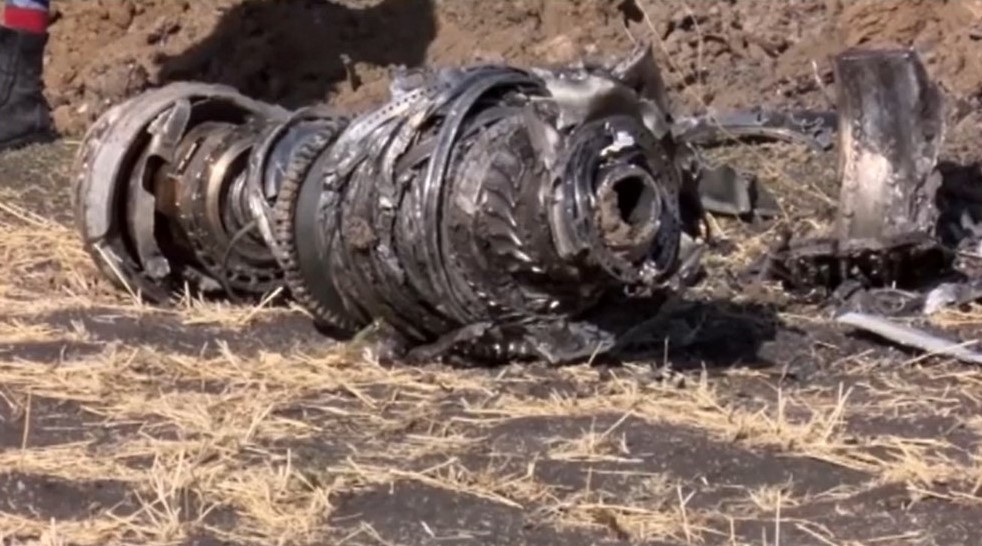Boeing concedes MCAS involved in two fatal flights.
04 April, 2019
7 min read
By joining our newsletter, you agree to our Privacy Policy


Boeing has admitted that new software added to the Boeing 737 MAX was a factor in the crashes of both Ethiopian Airlines Flight 302 and Lion Air Flight 610.
The company said a preliminary report from Ethiopian authorities contained flight data recorder information indicating the aircraft had an erroneous angle of attack sensor input that activated the Maneuvring Characteristics Augmentation System (MCAS) function during the flight -- as it had lion Air 610.
The statement came after Ethiopian officials releasing the preliminary report on the March 10 accident said the plane received repeated nose-down commands.
The Ethiopians said the crew performed all of the procedures provided by Boeing but was unable to control the aircraft.
READ: Ethiopian plane received repeated nose-down commands.
"The history of our industry shows most accidents are caused by a chain of events,'' Boeing chief executive Dennis Muilenburg said in a video statement.
"This again is the case here, and we know we can break one of those chain links in these two accidents.
"As pilots have told us, erroneous activation of the MCAS function can add to what is already a high workload environment. It’s our responsibility to eliminate this risk. We own it and we know how to do it.
"From the days immediately following the Lion Air accident, we’ve had teams of our top engineers and technical experts working tirelessly in collaboration with the Federal Aviation Administration and our customers to finalize and implement a software update that will ensure accidents like that of Lion Air Flight 610 and Ethiopian Airlines Flight 302 never happen again.
"We’re taking a comprehensive, disciplined approach, and taking the time, to get the software update right. We’re nearing completion and anticipate its certification and implementation on the 737 MAX fleet worldwide in the weeks ahead. We regret the impact the grounding has had on our airline customers and their passengers.
"This update, along with the associated training and additional educational materials that pilots want in the wake of these accidents, will eliminate the possibility of unintended MCAS activation and prevent an MCAS-related accident from ever happening again.
"We at Boeing take the responsibility to build and deliver airplanes to our airline customers and to the flying public that are safe to fly, and can be safely flown by every single one of the professional and dedicated pilots all around the world. This is what we do at Boeing.
"We remain confident in the fundamental safety of the 737 MAX. All who fly on it—the passengers, flight attendants and pilots, including our own families and friends—deserve our best. When the MAX returns to the skies with the software changes to the MCAS function, it will be among the safest airplanes ever to fly."
Expressing sadness for the loss of the 346 lives claimed by the two accidents, Muilenburg said he could not remember "a more heart-wrenching time" at his career at Boeing" and said the company knew lives depended on the work it did.
"Together, we’ll do everything possible to earn and re-earn that trust and confidence from our customers and the flying public in the weeks and months ahead,'' he said.
The Ethiopian report concluded the take-off roll was normal, including the readings from the two angle of attack sensors.
Shortly after lift-off the left angle of attack sensor deviated from the right one and reached 74.5 degrees compared to 15.3 degrees on the right angle of attack sensor.
This started a pre-stall stick-shaker that remained active until the end of the flight but at this stage, according to former US National Transportation Safety Board investigator Greg Feith, MCAS would not have been active.
After the autopilot engaged, there were small amplitude roll oscillations accompanied by lateral acceleration, rudder oscillations and slight heading changes that continued even when the autopilot disengaged.
Once the autopilot disengaged, the FDR recorded an automatic aircraft nose down (AND) trim command four times without pilot’s input. As a result, three motions of the stabilizer trim were recorded.
The FDR data indicates that the crew tried to use electric manual
trim to counter the automatic nose-down input but Feith notes this would have only interrupted MCAS for five seconds.
During this time the pilots were receiving "Don't Sink" alerts from the ground proximity warnings system as well as mismatched airspeed indications.
The crew performed Boeing's runaway stabilizer checklist and put the stab trim cutout switch to the cutout position but discovered the manual trim operation was not working.
The captain and first officer tried pulling back on the control column simultaneously and started to receive overspeed warnings.
After calling on the first officer to "pitch up' with him, the captain asked if the trim was functional.
The first officer replied that it was not working and asked if he could try to trim manually. This is done by grasping one of two wheels next to the pilots and turning it.
The captain told him to try but the first officer replied it was not working.
About 32 seconds before the end of the flight, the crew restored power to the trim stabilizer system -- something Feith says is not in the Boeing procedures -- and attempted to use the electric trim.
Some five seconds after the last manual electric trim, there was an automatic nose-down trim command the pilots were unable to counteract.
"Additional simultaneous aft column force was applied, but the nose down pitch continues, eventually reaching 40° nose down,'' the report said.
Feith applauded the detail provided by the report, including the fact the crew experienced errant angle-of-attack and airspeed issues immediately after takeoff.
He said it also supported the fact that the angle-of-attack fault initially experienced by the crew did not activate MCAS because the flaps and slats were still deployed.
"The report identifies a very good timeline of events, especially the flap retraction cycle, the operation of the stab trim and actions/inactions of the crew,'' he said. "In addition, the pilot engaged the autopilot which again would inhibit the MCAS."
The NTSB veteran said the story was becoming clearer but contradicted some fo the conclusions presented in the Ethiopian report.
"There are many questions yet to be answered but the primary question is what caused the fault with the AOA immediately after liftoff,'' he said.
"This is key because it caused other issues during various phases of the climb including improperly activating the MCAS.
"Also the report does not address information about unreliable airspeed procedures which should be considered because they had erratic airspeed, and there is no information about the autothrottle status - the FDR data appears to show the engines remained at a high power setting."
The 737 MAX is under intense scruitiny from a number of reviews.
The latest came when The US Federal Aviation Administration announced Wedesday it was forming a Joint Authorities Technical Review headed by former NTSB chairman Christopher Hart and including experts from the FAA, NASA and international aviation authorities.
Next Article
2 min read
Qantas triples profit but misses mark

Get the latest news and updates straight to your inbox
No spam, no hassle, no fuss, just airline news direct to you.
By joining our newsletter, you agree to our Privacy Policy
Find us on social media
Comments
No comments yet, be the first to write one.
